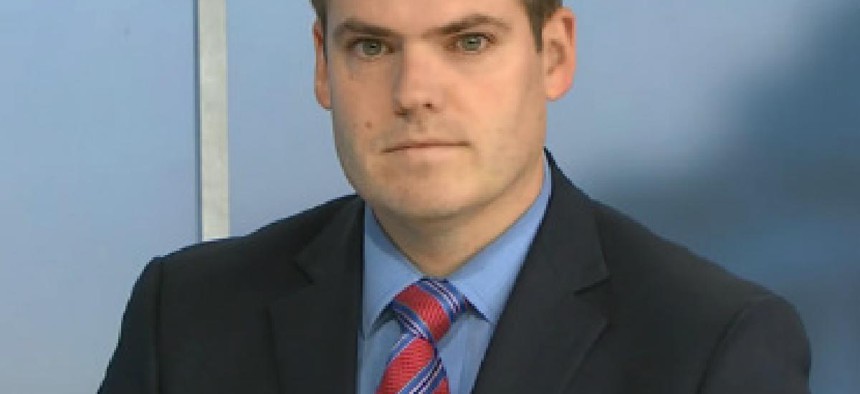White House leans on private sector for modernization

As agencies prepare to tackle the administration's IT priorities, the White House is looking to unite federal and private-sector efforts to modernize government systems.

Jack Wilmer, senior policy advisor with the White House's Office of Science and Technology Policy.
As agencies prepare to tackle the administration's IT priorities, the White House is looking to unite federal- and the private-sector efforts to modernize government systems.
In an interview on the Dec. 17 Government Matters program, Jack Wilmer, senior policy advisor with the White House's Office of Science and Technology Policy, acknowledged because of the deadlines set in the final Report to the President on Federal IT Modernization, "the first of half 2018 is pretty intense" for agencies.
The report, released by the American Technology Council, lays out the administration's IT modernization goals for 2018, which include continued migration to the cloud, further expansion of shared services and bolstered cybersecurity.
In addition to the ambitious scheduling, agencies -- many of which are already anticipating budget cuts -- will need to find "the bulk of the funding" within their own budgets to pay for modernization efforts, Wilmer said. He also pointed to the working capital funds created by the recently codified Modernizing Government Technology Act as a tool agencies can use.
Wilmer, one of the lead authors of the IT Modernization Report, said agencies are going to have to prioritize certain projects to make sure they don't spread themselves too thin.
"One of our big points of emphasis was trying to make sure that agencies are spending the dollars and people on the things that are most important," he said. That's going to have to be one of the lenses that we look through as we look to allocate the dollars -- where are we going to get the best return on investment?"
Wilmer said part of how the White House plans to direct the modernization efforts is through standing up centers of excellence, which will "leverage private-sector expertise, bring it in in a centralized fashion to make that available to government agencies as they modernize."
"As we stand up those centers of excellence, I think that will also help agencies as they go through their individual modernization efforts," he said.
The Trump administration announced the establishment of five centers of excellence at a Dec. 14 industry day hosted at the White House. The General Services Administration's Technology Transformation Service will lead the development of centers focused on cloud adoption, infrastructure optimization, customer experience, service delivery analytics and contact centers. The Department of Agriculture is the first customer.
Wilmer said the decision to name Agriculture as the home of the first center of excellence came down to the commitment of Secretary Sonny Perdue.
"The secretary of Agriculture was extremely supportive of modernizing Agriculture, I think that's one of his major objectives, and I think [he] understands the importance of IT in all of this.... So Agriculture seemed like a perfect example." Wilmer said. "When you have secretary-level-down commitment in making this happen, we wanted to make sure the first one that we roll out is going to be a success... then we can follow up rapidly with others."
The White House's role in the governmentwide modernization is more about strategy and direction than about hands-on implementation, which ultimately falls to the agencies, Wilmer said, adding that making sure CIO and tech shops have senior-level commitment "is something we're going to look at for the entire federal government as they modernize."
"There are going to be things that pop up -- a perfect example is some of those cloud modernization challenges, that agencies can't solve themselves," he said. "That's where we can play a significant role into helping to knock down those barriers."
NEXT STORY: GSA gets ready for new e-commerce portals





